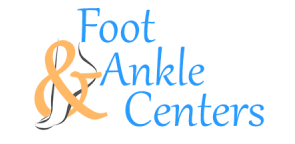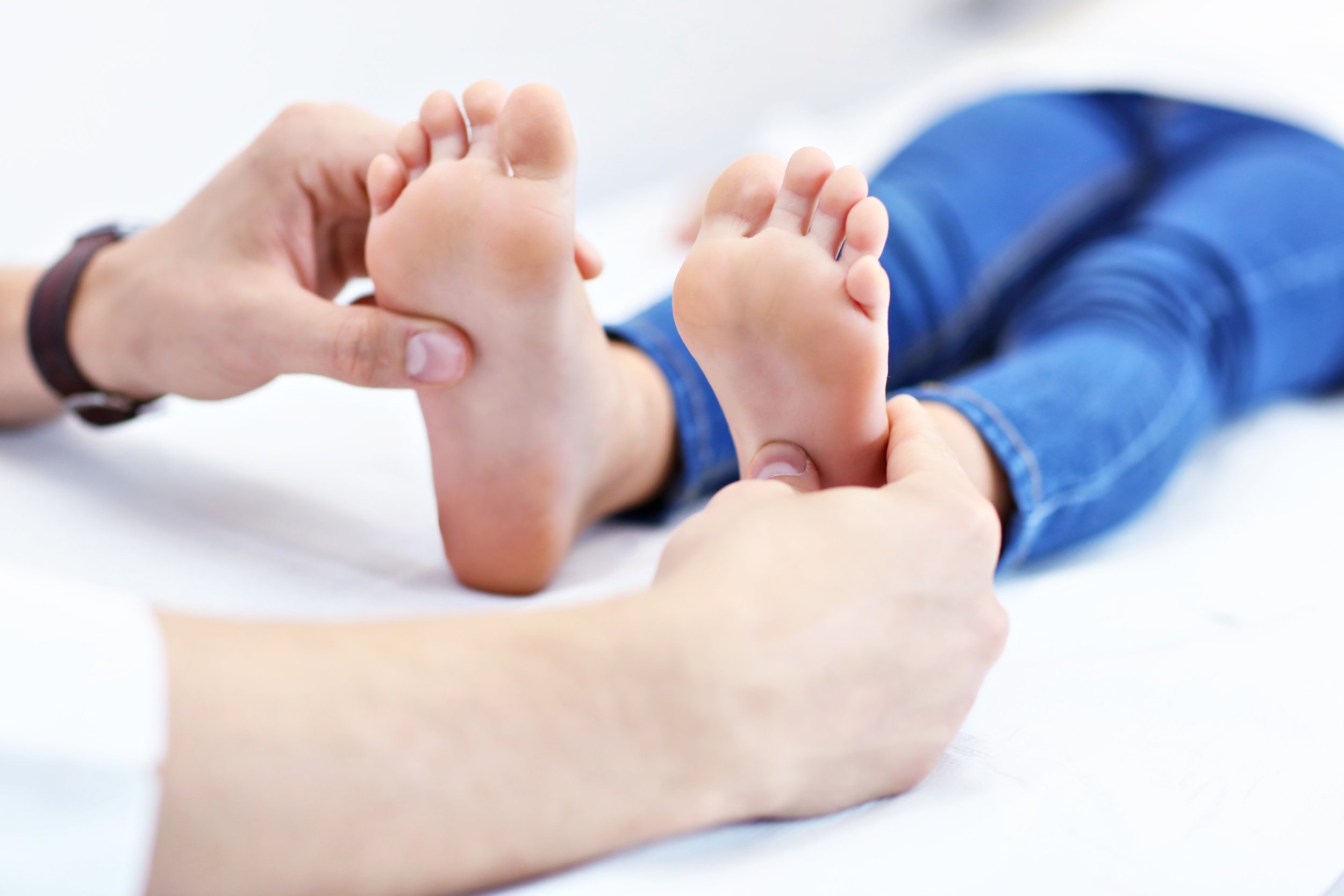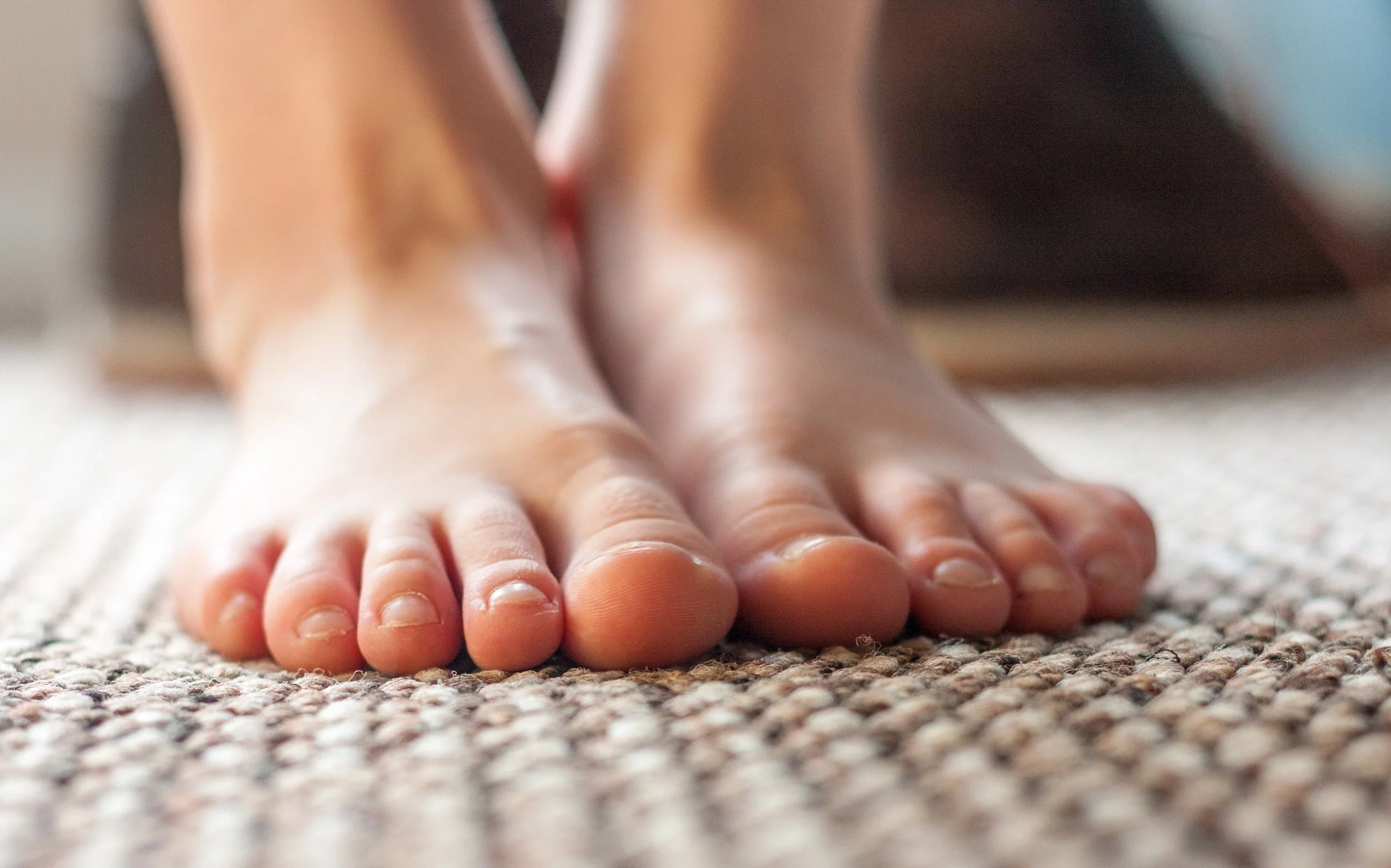In-Toeing & Out-Toeing in Children
What is in-toeing?
It is often known as "pigeon toe" — it is a pediatric condition caused by the bones or joints being misaligned. Parents often notice that their child's feet turn inwards when they walk or run.
There are three main conditions causing it:
Metatarsus adductus (the foot turns inward): most common in infants and toddlers.
Tibial torsion (the shinbone turns inward): most common in children 18 months to 4 years.
Femoral anteversion (the thighbone turns inward): most common in older children.
In children younger than age 8, it typically corrects itself without special treatment.
Signs and symptoms of in-toeing
Metatarsus adductus appears over the first 4 to 6 months of life. Though it looks like clubfoot, it is far less severe and will often improve without treatment. You'll notice the child's foot turns inwards when sitting.
Tibial torsion involves an inwardly turned tibia (lower leg) during running, walking, or at rest. Before birth, the legs rotate to fit inside the womb. In the case of tibial torsion, they do not rotate afterward — though the condition "untwists" as the child continues to grow.
Femoral anteversion, also referred to as excessive femoral torsion, manifests as an inward-turned upper leg during running, walking, or at rest, with the potential for the foot turning inward. Children often adopt a "W" position — knees bent, with feet flared out behind.
When to see a doctor?
Because most cases of this foot condition improve without treatment, seeing a doctor is often unnecessary. However, many parents and carers choose to get the condition checked by a foot and ankle doctor to ensure the condition is improving.
Children with this condition who experience pain, swelling, or a limp should always be evaluated by a podiatrist for possible treatment.
Children may need casts, braces, and surgery to correct the condition in some instances. However, this is seldom required. In fact, less than 1% of all cases require treatment.
Our Foot Doctors can help evaluate your child's condition. Schedule a consultation with Foot & Ankle Centers today.
What is out-toeing?
It is also known as being "duck-footed" — it is a condition exclusively affecting children. Due to a baby's position inside the womb, this condition is most commonly caused by the baby's hip becoming temporarily externally rotated. The condition typically improves before the child starts walking.
Other causes include:
External tibial torsion. The shinbone is pointed outwards and is also caused by a baby's position inside the womb.
Flat feet (pes planus). Flat feet give the appearance of toes pointing outward.
Femoral retroversion. The thigh bone (femur) twists outwards. Most often seen in obese children.
Legg-Calve-Perthes (LCP). Decreased hip rotation caused by the condition can lead to a change in the alignment of the feet.
Cerebral palsy. Due to a muscular imbalance, one leg develops an outward twist. It can, less commonly, occur in both feet.
Signs and symptoms of out-toeing
The primary symptom is an outward-pointing toe, either when sitting, standing, walking, or running. In most cases, there will be no other signs or symptoms. Occasionally, children will limp or feel pain or some other discomfort.
Where the outward deviation occurs will depend on the cause of the condition. This foot condition in older children is much more serious and needs urgent attention for treatment.
When to see a doctor?
This foot condition typically doesn't require any intervention and will fix itself during the normal course of growth. A foot doctor may recommend physical therapy and orthotics for some children to resolve the issue.
Surgery may be necessary in rare cases to provide a lasting solution, especially for individuals with feet that turn outward. Braces, traditionally employed to address the condition, may not effectively treat all causes, as indicated by recent research.
All children with this foot condition are welcome to see a doctor. Children with pain, discomfort, or a limp should always see a doctor for examination and treatment. In addition, if the condition has not improved by age three or your child misses their developmental milestones, you should schedule an appointment with a foot doctor.
Foot doctors will generally complete a neurological examination and take X-rays to eliminate other potential causes.
The vast majority of children with out-toeing lead healthy, active, and pain-free lives. Only 1 in 1,000 children report residual pain or discomfort requiring further treatment.
Our Foot Doctors are ready to examine your child's condition. Book an appointment with Foot & Ankle Centers today.



